20 Aug Travel Guide to Visiting Zion National Park In 2020
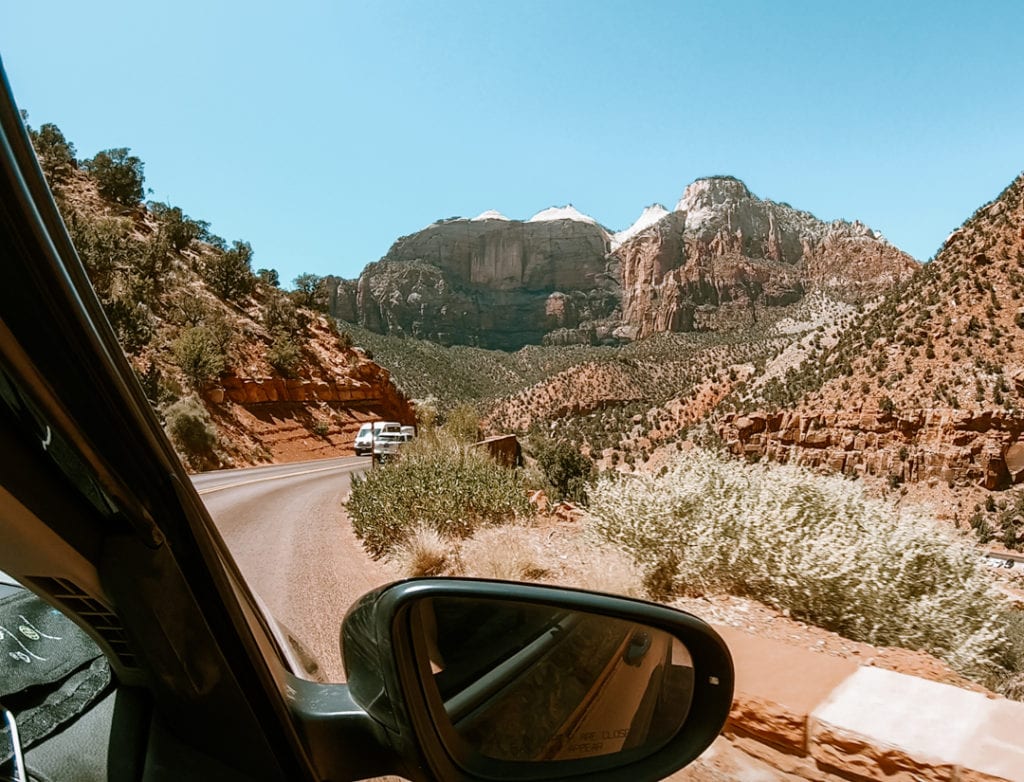
What's in this post
Click to skip ahead
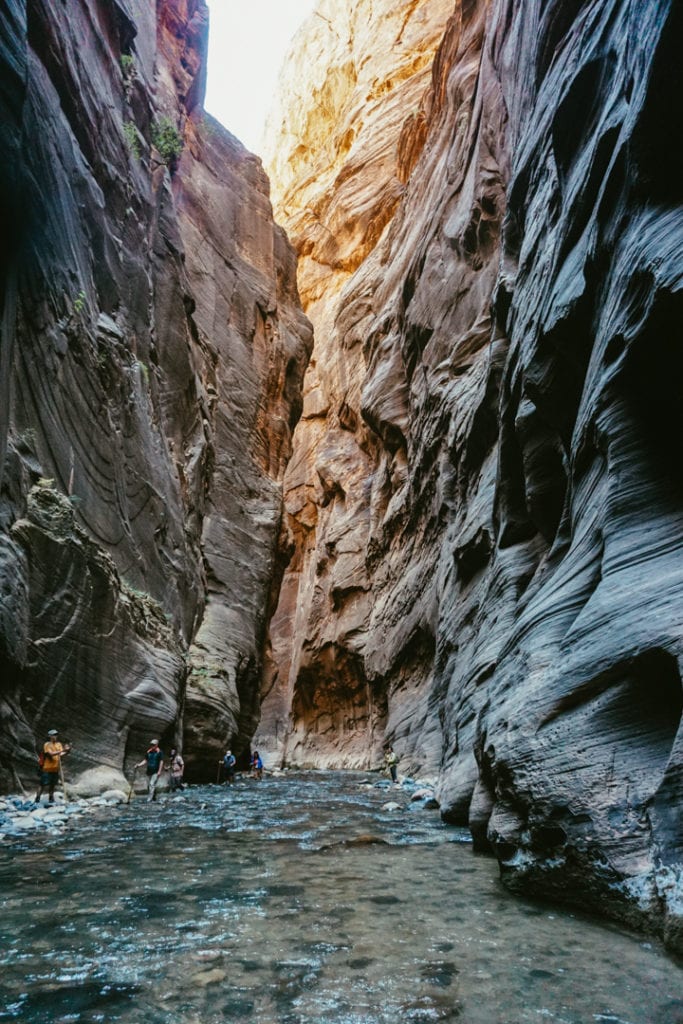
Zion During Covid -19
As of July 2020, Zion National Park is open to visitors but there are some restrictions and extra steps visitors must take in order to visit.
The most significant one is that in order to access the main part of the park (Zion Canyon), reservations must be made for the shuttle bus (read more here).
While most trails are open to hiking, the Angel’s landing chain portion is closed and longer hikes that required a wilderness permit are also off limits. Kolob canyon trails were also closed, but are scheduled to reopen on August 19.
As for campgrounds, Watchman and South campground are open, but are not allowing group camping. Lava point campground may open with Kolob Canyon.
Lastly, hiking is the only activity available in Zion currently. Backpacking, kayaking, and canyoneering are not allowed.
Despite these restrictions, a trip to Zion is still more than possible to enjoy! Yes, more planning is involved and precautions are necessary, but some of the most beautiful hikes are still open including the famous Narrows hike!
**Restrictions and closings are subject to change, so be sure to check the Zion National Park website and follow the CDC guidelines.
*This information is from (08/20/2020)
Entrances to Zion National Park
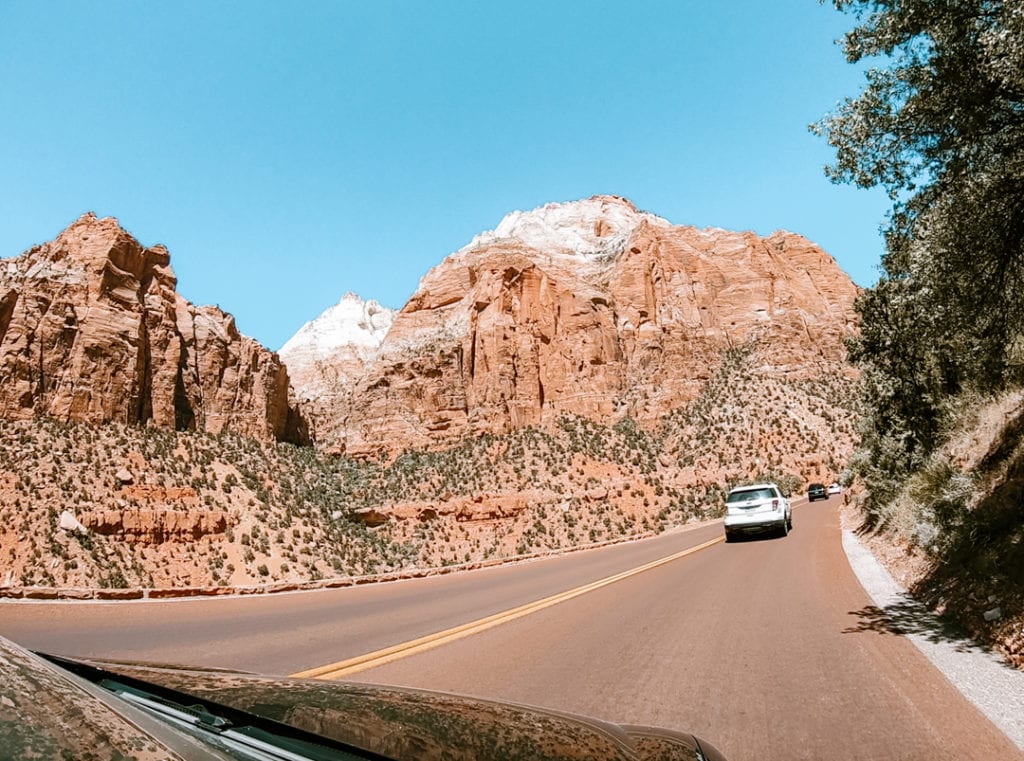
Driving Zion Mount Carmel Scenic Highway
Off of route 89, turn onto route 9 (Mount Carmel Highway) and follow this road all the way through the East entrance to the South Entrance Visitor Center.
When entering in directions to your maps app, to ensure it takes you the scenic route instead of the most convenient way, you can enter ‘Mt Carmel Highway’ as a stop on the route and then put the South entrance visitor center as your final destination.
When driving the highway, don’t go too fast and be extremely mindful. There are many sharp curves in the road, part of it is down hill, and a lot of times people stop unexpectedly to pull over at a scenic point or trail.

Entrance Fee
All the standard passes are valid for 7 days:
- $35 for a vehicle (covers everyone in the car)
- $30 for motorcycle
- $20 per person (if you’re not in a car)
There’s also the annual pass to Zion, which provides unlimited access to Zion National Park for a full year. And then my favorite, the annual national park pass that gets you into all the U.S. national parks for a full year. I highly recommend getting this if you’re going on a U.S. road trip.

Visitor Center & Parking
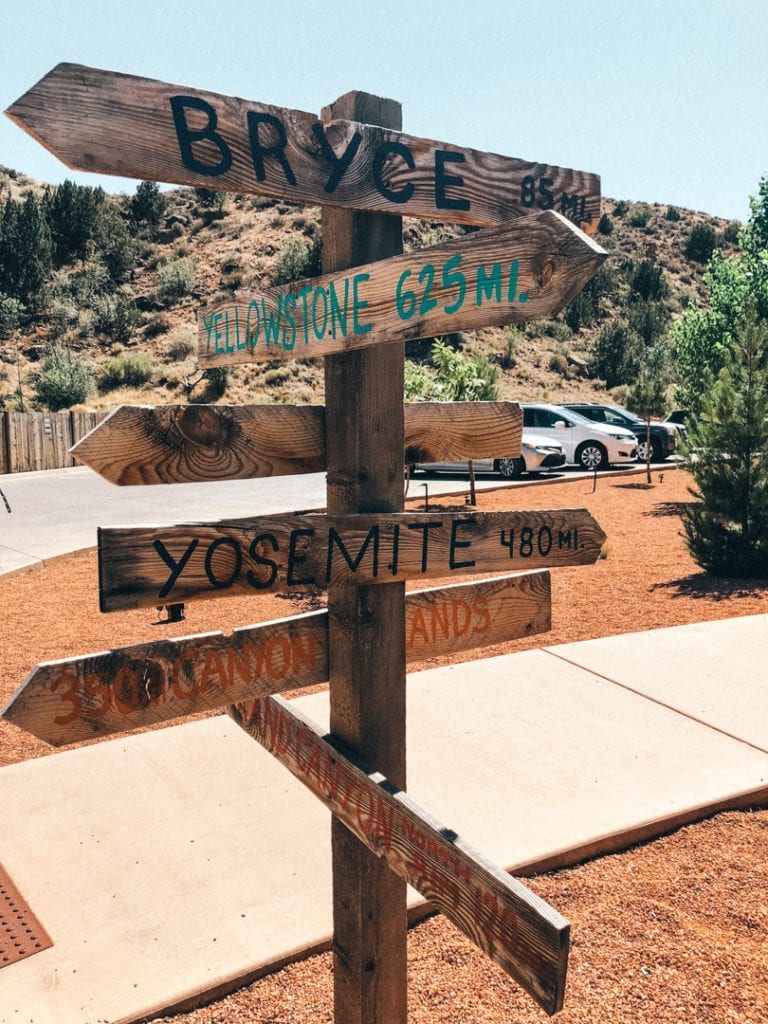
Navigating the Shuttle
The Zion Shuttle System in 2020
The ticket can be reserved online and is only $1. Be sure to print out or download your ticket on your phone to be shown before boarding.
The times are available in one-hour blocks from 6am – 5pm. You must take the shuttle to the trail you want during your scheduled time only. After that though, you can stay as long as you want and take the shuttle back to the visitor center or even go to a different trailhead whenever.
In the past, a shuttle would come every 10 minutes or so. Therefore, unless there was a long line, waiting did not take too long. Now with COVID-19 restrictions, waiting times may vary.
Keep in mind if you are visiting Zion for several days, you need to book a shuttle for each separate day.
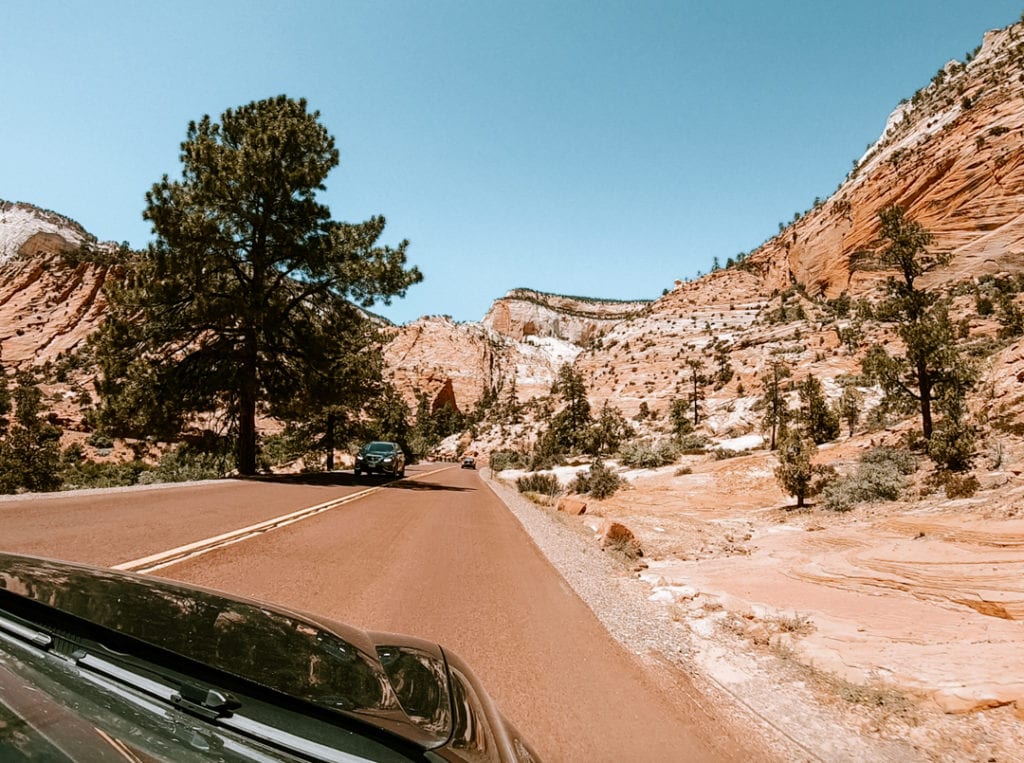
Things to Do in Zion
The most popular thing to do in Zion is hike. Some trails offer an easier scenic stroll and some are strenuous treks. If you have a bicycle, biking is also fun here especially for a leisurely ride down Pa’rus trail.
There’s also a variety of more intense activities like rock climbing, backpacking (hiking and camping over night), canyoneering and kayaking. These types of activities require permits and guides. You can learn more about these activities on the Zion National Park website.
Trails & Viewpoints
1. The Narrows

- The Narrows is absolutely incredible and a bucket list trail! It takes you through the Virgin River and in between a tall, narrow slot canyon!
- It can be done in a few ways: 1. Hiking slightly in and coming back out (called the Riverside Walk – great for kids) 2. Hiking along the Riverside walk, to Wall Street and as far as Big Springs, and then hiking back out. 3. Starting from the top of the Virgina River and hiking all the way to the bottom (16 miles total and you need a permit)
- The difficulty of the trail depends on how you do it (listed above); the first way is easy and the second two ways are difficult and not for everyone.
- If you do the in and out route (1&2) then the hike starts in Zion Canyon at shuttle stop #9 Temple of Sinawava.
For a full guide to hiking The Narrows read this post!
2. Angel’s Landing
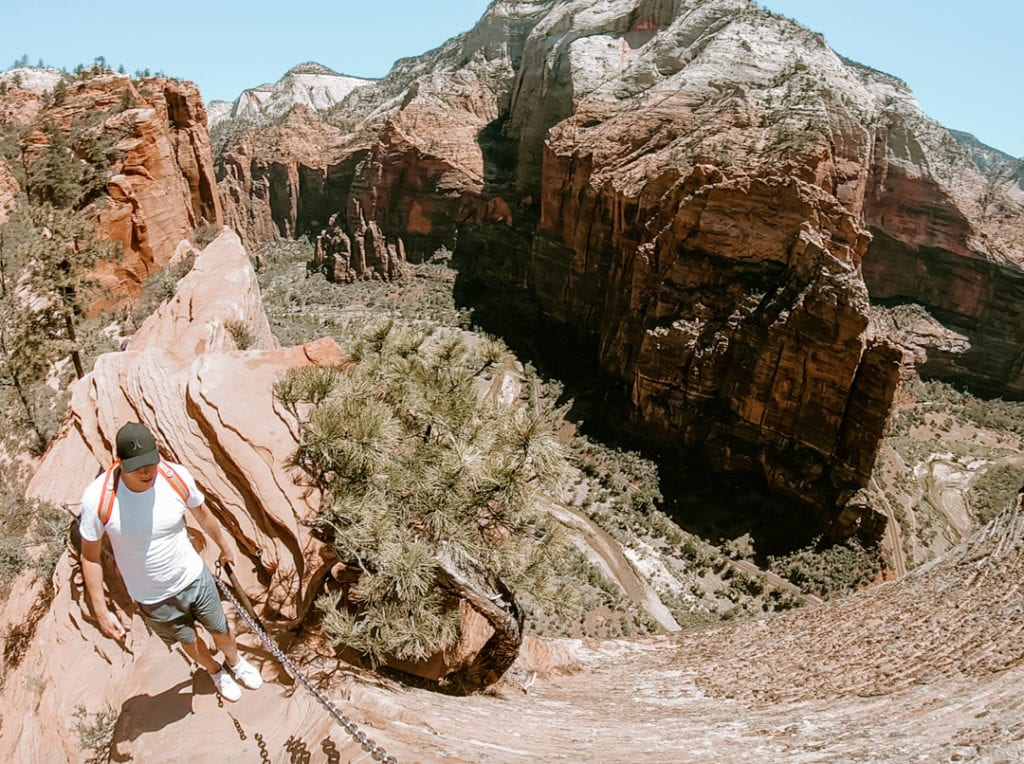
- This is a 5 mile hike going up to Angel’s landing and then back down.
- It’s a paved uphill trail with many switchbacks and then the last half mile is along a narrow ridge holding onto a chain!
- This hike is NOT for everyone, it is strenuous and very dangerous. Definitely not for anyone with a fear of heights either.
- Angel’s Landing is very popular and more dangerous with so many people going up and down. I suggest going in the early morning to avoid people.
- The trail starts from Zion Canyon at shuttle stop #6 The Grotto.
*The chains portion of the Angel’s Landing trail is closed during COVID-19 (08/20/2020).
3. Observation Point

- This viewpoint is the best in Zion, even better than Angel’s landing, it provides a panoramic view of Zion Canyon.
- The trail to Observation point via the East Rim is 8 miles there and back, and a strenuous hike.
- The trailhead is located at Zion Canyon shuttle stop #7 Weeping Rock.
4. Emerald Pools
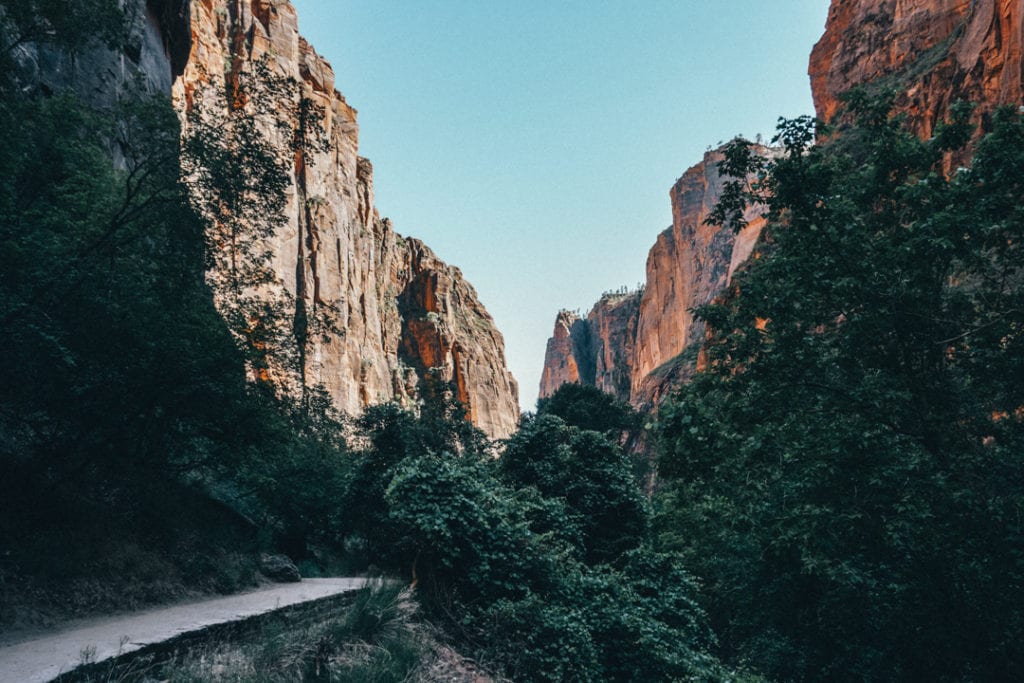
- Emerald Pools trail (also called Upper emerald pools trails) is a 3 mile scenic loop hike.
- It’s an easy trail but rated as moderate for the length.
- If you’re looking for a shorter and even easier trail, you can do Lower Emerald Pools which is an in-and-out trail only 1.5 miles roundtrip.
- Lower Emerald Pools trail is great for kids and elderly people.
- For Lower Emerald Pools trail you start in Zion Canyon at shuttle stop #5 Zion Lodge.
- For the full Emerald Pools loop trail, you can start at shuttle stop #5 or #6 The Grotto.
5. The Watchman Trail
- A 3 mile hike that offers great views of Springdale and the lower portion of Zion Canyon.
- The trailhead is at the South Entrance Visitor Center.
6. Zion Canyon overlook Trail
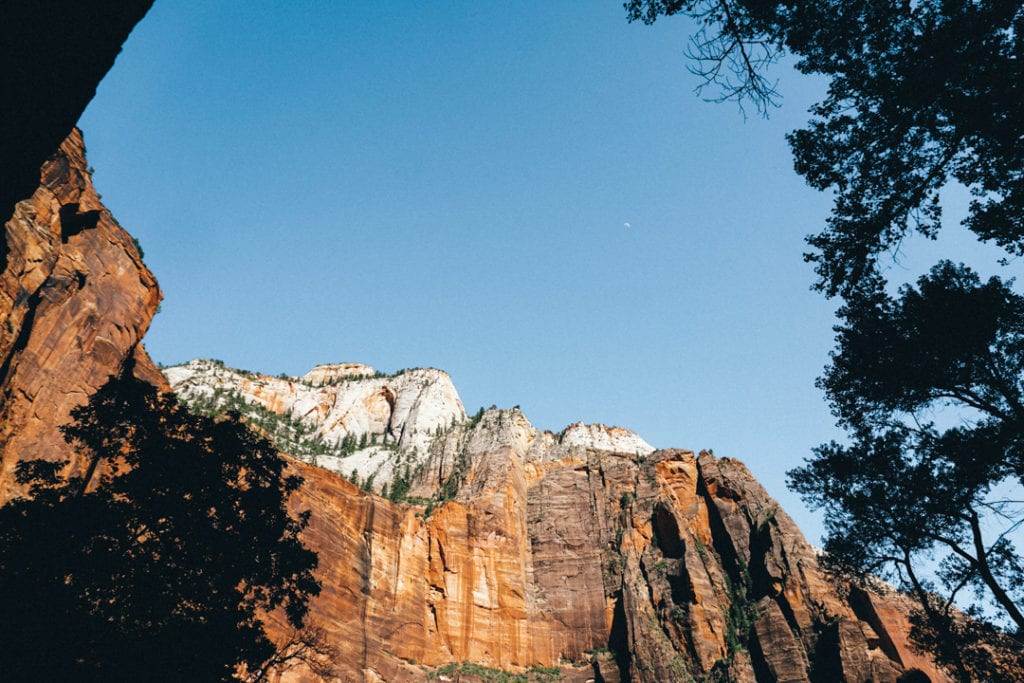
- This is a 1 mile hike that provides a great view of Zion Canyon.
- Because the hike is only a mile and rated moderate difficulty, this is a great alternative for someone who cannot or doesn’t want to hike Observation Point or Angel’s Landing.
- The trailhead does not begin from Zion Canyon and therefore is not reached by shuttle bus.
- You must drive to the trailhead which is located along route 9 just before the Mount Carmel Tunnel.
- There is parking available but it usually fills up fast.
7. Hidden Canyon Trail
- Hidden Canyon trail is 3 mile hike with switchbacks and then in-between a narrow canyon.
- This is a strenuous hike and those who are fearful of heights are recommended to avoid it.
- The trailhead for Hidden Canyon is in Zion Canyon at shuttle stop #7 Weeping Rock.
8. Pa’rus Trail
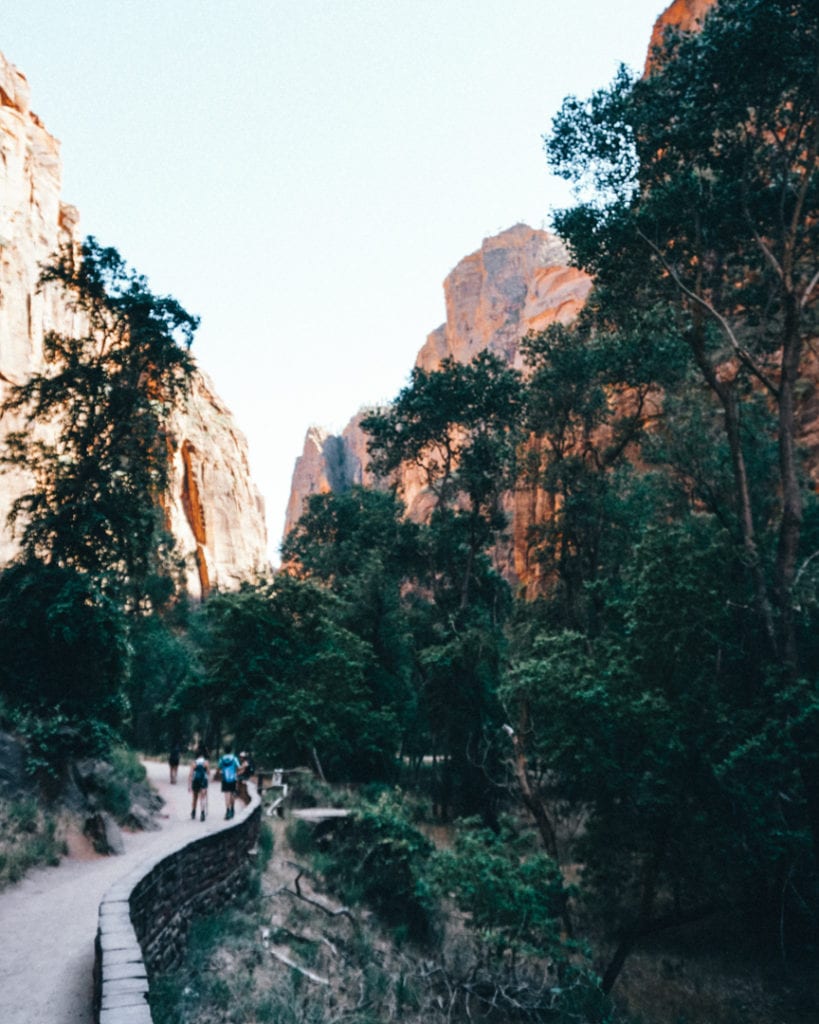
- A 3 mile paved scenic trail that is good for kids, pets, biking, and is wheelchair accessible.
- The trail begins at the south entrance visitor center.
9. The Subway
- The subway is a strenuous 9 mile hike to an epic slot canyon known as “The Subway.”
- This trail requires hiking through water, clambering over rocks, and more.
- A permit is required to complete this hike (you can read more about getting a permit here.)
- The trailhead begins at Left Fork Trailhead which is up at Kolob Canyons.
*Closed right now during COVID-19 (08/20/2020).
10. Many Pools
- A 2.3 mile hike, but really you can go as far or not as you want.
- This trail is great for exploring as it’s not a maintained trail. You’ll be able to see small slot canyons and walk along the rock.
- The trailhead begins off of route 9.
More trails are listed on the Zion National Park website and AllTrails is also a great resource!

Which Hiking Trails Should I Pick?
Which hikes you decide to do is completely up to your skill level and what kind of experience you want. For a balanced trip though, if someone is relatively fit and able then I always suggest doing the Narrows (because it’s so unique and should be on your bucket list!), then one high elevation hike that offers great views (like Angel’s Landing, Observation Point, etc.) and then one easier, exploratory hike.
Where to Stay
If you’re planning to explore Zion for several days, you can find camping areas, glamping spots, Airbnb’s and hotels.
Campgrounds in Zion
Zion has 3 campgrounds within the park: Lava point, Watchman, and South campground.
Lavapoint Campground
*currently closed due to Covid-19 (08/20/2020)
- In the north portion of Zion about an hour drive from the South Entrance
- Only 6 campsites available
- First come, first serve basis
- You can learn more about the campground here
Watchman Camground
- Near the South entrance visitor center
- Must reserve a campsite online
- Reservations are available up to 6 months in advance and they fill up pretty quickly
- You can learn more about the campground here
South Camground
- Near the South entrance visitor center
- Must reserve a campsite online
- Reservations are available up to 2 weeks in advance and they fill up very quickly online.
- You can learn more about the campground here
If you’re considering staying at one of these campgrounds in Zion, I suggest reading about it more on the park website.
The important things to remember though are to reserve ahead of time, be mindful of the heat, have the proper gear, and understand which amenities are available to you.
Note that Zion campgrounds do provide bathrooms, but not showers. You can instead pay $5 for a 7 minute shower in Springdale at the Narrows Shower or other places.
More Campgrounds
- Zion Canyon Campground
- Zion River Resort RV Park & Campground
- East Zion RV park
- Kolob Campground
- Airbnb has some private campgrounds available (this is what I did)
Accommodation: Airbnbs, Hotels, and Resorts
When searching for lodging, Airbnb and Booking.com work great.
The popular areas to find accommodation are within Springdale, Virgin, Hildale, and Kanab. When planning, note that locations up to an hour away are recommended on accomodation websites for Zion, so be aware of that distance.
SPRINGDALE : the town right outside Zion that has a lot of hotels available. If staying in Springdale there’s also a town shuttle that transports people to the park entrance.
HILDALE : about an hour drive away from the south entrace. Hildale has a few really cool glamping spots.
KANAB : about an hour drive away from the south entrace. Kanab has many hotels and also the only hostel in the area.
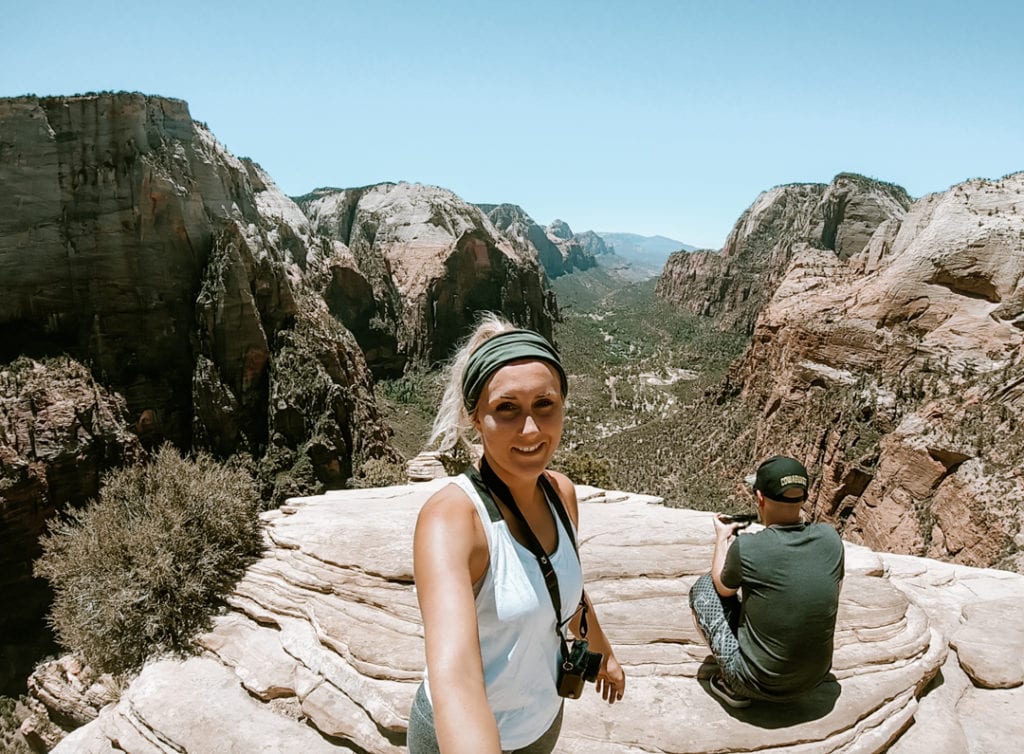
And that’s it! If you’ve been to Zion before and loved it, leave a comment below! If you haven’t been but this post was helpful, also leave comment! I love to hear feedback and I’m positive you will have the time of your life in Zion, because I know I did!
Liked this post? Pin it!
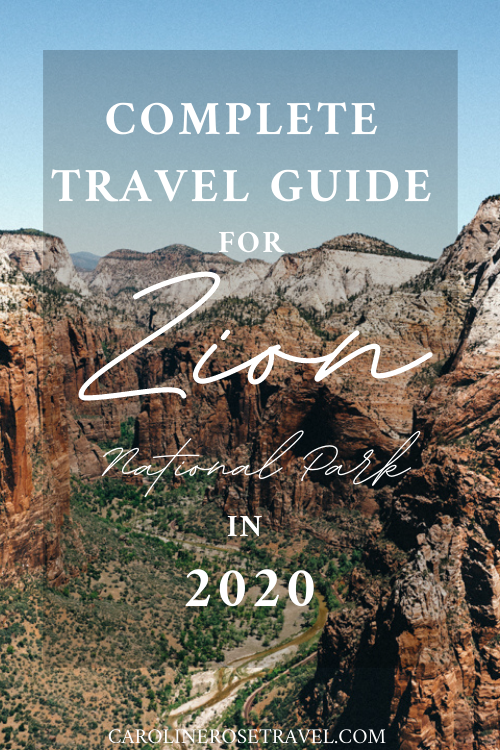





No Comments